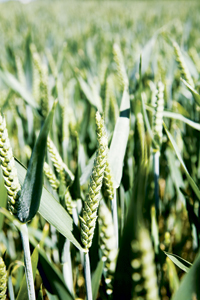Keep crops profitable despite climate changes

Thinking about what you may grow under a climate of milder, wetter winters and warmer, drier summers may seem academic right now. But if scientists and plant breeders don’t find solutions to the likely challenges before they arise, UK cropping could lose its competitive edge.
Well aware that it takes at least 10 years to develop a new variety or a fungicide, the HGCA has invested in two LINK projects to protect profits. It’s about learning lessons from countries where the climate and agronomy are similar to what has been predicted for the UK.
While it’s too early to confirm that we will be able to fully mitigate the yield loss expected from potential water shortages in the south, it is hoped the results will help plant breeders develop wheat varieties with better drought tolerance or adapted to use water more efficiently.
Project summariesProject no. 3233: Improving water use efficiency and drought tolerance in UK winter wheats; Rothamsted Research (Broom’s Barn Research Centre), KWS UK, Limagrain UK Ltd, RAGT and DEFRA under a Sustainable Arable LINK; HGCA contributing £100K of £607K total; from September 2006 to March 2010. Project no. 3399: Challenges from climate change on disease management in sustainable arable systems (CLIMDIS); Rothamsted Research, FERA, NFU, BBRO, Harper Adams University College, Bayer CropScience, Eden Research, ProCam, KWS UK, Limagrain UK Ltd, RAGT and Defra under a Sustainable Arable LINK; HGCA contributing £52K of £502K total; from October 2008 to October 2010. |
Eric Ober, of Broom’s Barn Research Centre, has found several promising traits among the 64 varieties he is examining. He believes by next spring he will be able to define a combination of features that describe a more drought-tolerant type. Factors such as leaf size, leaf thickness, green canopy retention and maturity may all help.
The ultimate aim is to combine ideal traits with high yield potential and varietal stability under different conditions. Dr Ober would like to assign ratings for drought and possibly also for yield stability to the Recommended List, so growers can hedge their bets whatever the season holds.
“Ironically, two of the three project years weren’t dry enough to record sufficient stress in the RL trials, but in one we could identify differences in sensitivity to available water supply. We shall continue to record symptoms such as leaf spotting, often an early sign of drought stress,” he says.
Leaf spotting can be confused with the devastating warm climate cereal disease, tan spot. Jon West of Rothamsted Research has been investigating the potential for tan spot in the UK, and fears it will become “the new septoria“.
“We predict that warming will place tan spot alongside brown rust and yellow rust as ever increasing threats to cereal production. Certain viruses will also proliferate. But we can protect against these if we influence plant breeding and learn how to modify rotations and crop management.”
The project has also focused on other crops. There seems little doubt we will see more sclerotinia in pulses and cercospora leaf spot in sugar beet. There is good and bad news for oilseed rape growers – light leaf spot may disappear, but phoma stem canker will increase in severity, warns Dr West.
“Scottish growers should be able to manage expected levels of phoma and make good profits, particularly as warmer temperatures and higher carbon dioxide levels will boost oilseed rape yields there. But unless we can reduce the effects by using resistant varieties and fungicides, I can foresee a day when southern English growers may have to avoid losses to phoma by growing alternative oilseed crops.”
Another objective of the project is to deliver more accurate risk forecasting models for phoma and for fusarium ear blight. For the first time, scientists are linking forecasting with climate-simulated crop growth stage models to map the likely severity of each disease under different conditions.
By the end of next year, Dr West hopes to have pinpointed the key diseases to research further and spurred on the plant breeders and agrochemical companies involved.
HGCA PERSPECTIVE:• Identify future threats under predicted climate change Crops perspective:Anticipating cropping under climate change is critical. For example, knowing sclerotinia and cercospora could be a greater threat in 30 years time should force the industry to work together to minimise the impact these diseases may have on crop profitability. |

